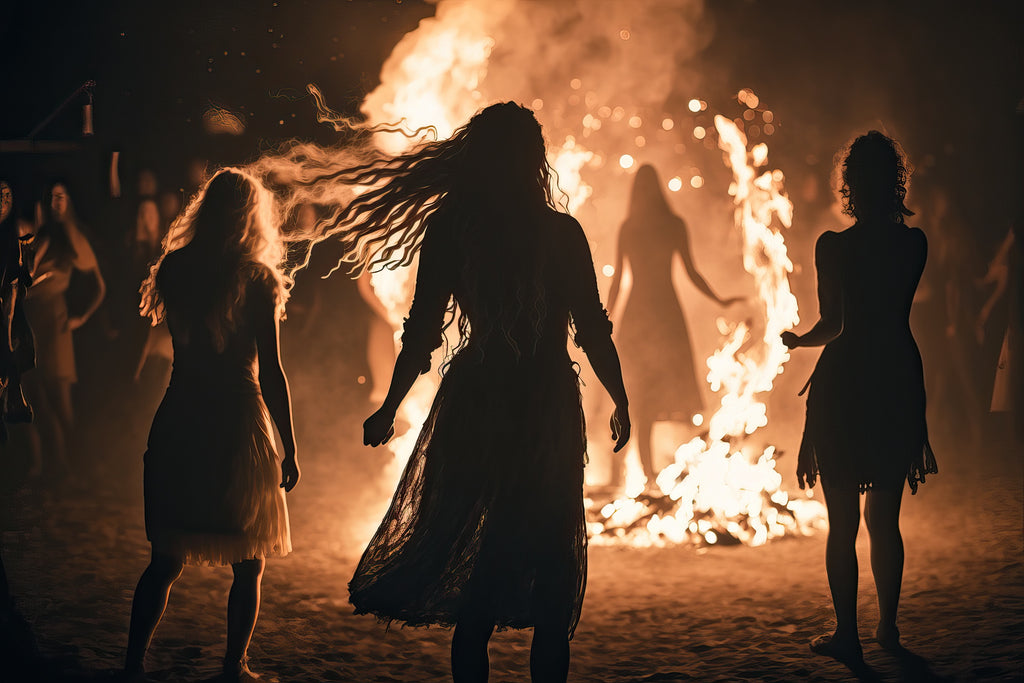Crafting Your Personal Wheel of the Year: Embracing Pagan Traditions, Local Witchcraft, and Nature Practices
The Wheel of the Year is a sacred concept rooted in pagan traditions that celebrates the cyclical nature of life, the changing seasons, and the connections between humanity, nature, and the divine. While there are many established versions of the Wheel of the Year, creating your own personalized interpretation can be a deeply meaningful and enriching experience. In this blog post, we'll explore how to craft your own personal Wheel of the Year, infused with local witchcraft and nature practices that honor the unique energies of your surroundings.

Understanding the Wheel of the Year
The Wheel of the Year is a cycle that consists of eight major festivals, marking the turning points in the Earth's orbit around the sun. Each festival has its own significance and is celebrated in various pagan traditions around the world. These festivals are divided into two main categories: solar festivals, which mark the solstices and equinoxes, and cross-quarter festivals, which fall between them.
-
Yule (Winter Solstice) - Celebrated around December 21st, Yule marks the rebirth of the Sun and the return of longer days. It's a time for reflection, renewal, and setting intentions.
-
Imbolc - Around February 1st, Imbolc heralds the first signs of spring. It's a time to honor the growing light, purification, and the awakening of the Earth.
-
Ostara (Spring Equinox) - Occurring around March 21st, Ostara celebrates balance and fertility as day and night become equal. It's a perfect time for embracing growth, both spiritual and physical.
-
Beltane - Celebrated around May 1st, Beltane signifies the peak of spring and the celebration of life and love. It's a time for joyful festivities and honoring the Earth's fertility.
-
Litha (Summer Solstice) - Around June 21st, Litha marks the longest day of the year. It's a time to celebrate the Sun's power, abundance, and the beauty of nature.
-
Lughnasadh - Occurring around August 1st, Lughnasadh celebrates the first harvest. It's a time to give thanks for the Earth's bounty and reflect on your personal achievements.
-
Mabon (Autumn Equinox) - Around September 21st, Mabon signifies the second harvest and the start of the descent into darkness. It's a time for introspection, gratitude, and balance.
-
Samhain - Celebrated around October 31st, Samhain is the pagan New Year and a time to honor the ancestors and the thinning of the veil between worlds. It's a time for reflection, divination, and remembering.
Your personal Wheel can include festivals that align more closely with your local environment and beliefs. Connect with Your Local Landscape. Embracing local witchcraft and nature practices involves a deep connection to the land around you. Spend time observing the unique changes in nature that occur throughout the year. Take note of local flora, fauna, weather patterns, and the energies they bring. This connection will form the foundation of your personalized Wheel.

Crafting Your Personal Wheel
-
Research Local Traditions: Research the pagan and witchcraft practices specific to your local area. Consider the indigenous beliefs and customs that connect with the changing seasons and natural phenomena around you.
-
Align with Nature: Observe the local climate, flora, and fauna. Tailor your Wheel to match the rhythms of your environment, integrating the unique qualities of each season into your celebrations.
-
Create Rituals: Develop rituals and ceremonies for each festival that resonate with your beliefs and surroundings. These rituals can include meditation, spellwork, offerings to nature spirits, and communal gatherings.
-
Connect with Elements: Incorporate the four classical elements – Earth, Air, Fire, and Water – into your celebrations. For example, you might build altars with natural materials, light candles, burn incense, or work with local bodies of water.
-
Garden Magic: If possible, cultivate a garden and plant herbs or flowers associated with each season. This not only connects you with the Earth but also provides opportunities for magical work.
-
Seasonal Cooking: Prepare meals using seasonal, locally-sourced ingredients. Sharing these meals with loved ones can be a powerful way to celebrate the Wheel of the Year.
-
Reflect and Adjust: At each festival, take time to reflect on your personal journey, set intentions, and assess your spiritual growth. Adjust your practices based on what resonates most deeply with you.
Embracing the Personal and Collective
Remember that your personal Wheel of the Year is a reflection of your spirituality, connection to nature, and local traditions. While your practices are deeply personal, they can also be shared with a community of like-minded individuals. Consider inviting friends, family, or local pagan groups to join in your celebrations, fostering a sense of unity and shared experience.
Conclusion
Crafting your own personal Wheel of the Year that's infused with pagan practices, local witchcraft, and nature observance is a beautiful way to honor the cycles of life, nature, and spirituality. By connecting with your local environment and understanding its unique energies, you can create a Wheel that resonates deeply with your beliefs and personal journey. This endeavor allows you to not only deepen your connection with the land but also form a stronger bond with the pagan traditions that have shaped humanity's relationship with the divine for generations. May your Wheel of the Year guide you through the cycles of life, connecting you with ancient wisdom and the ever-present magic of the natural world.


